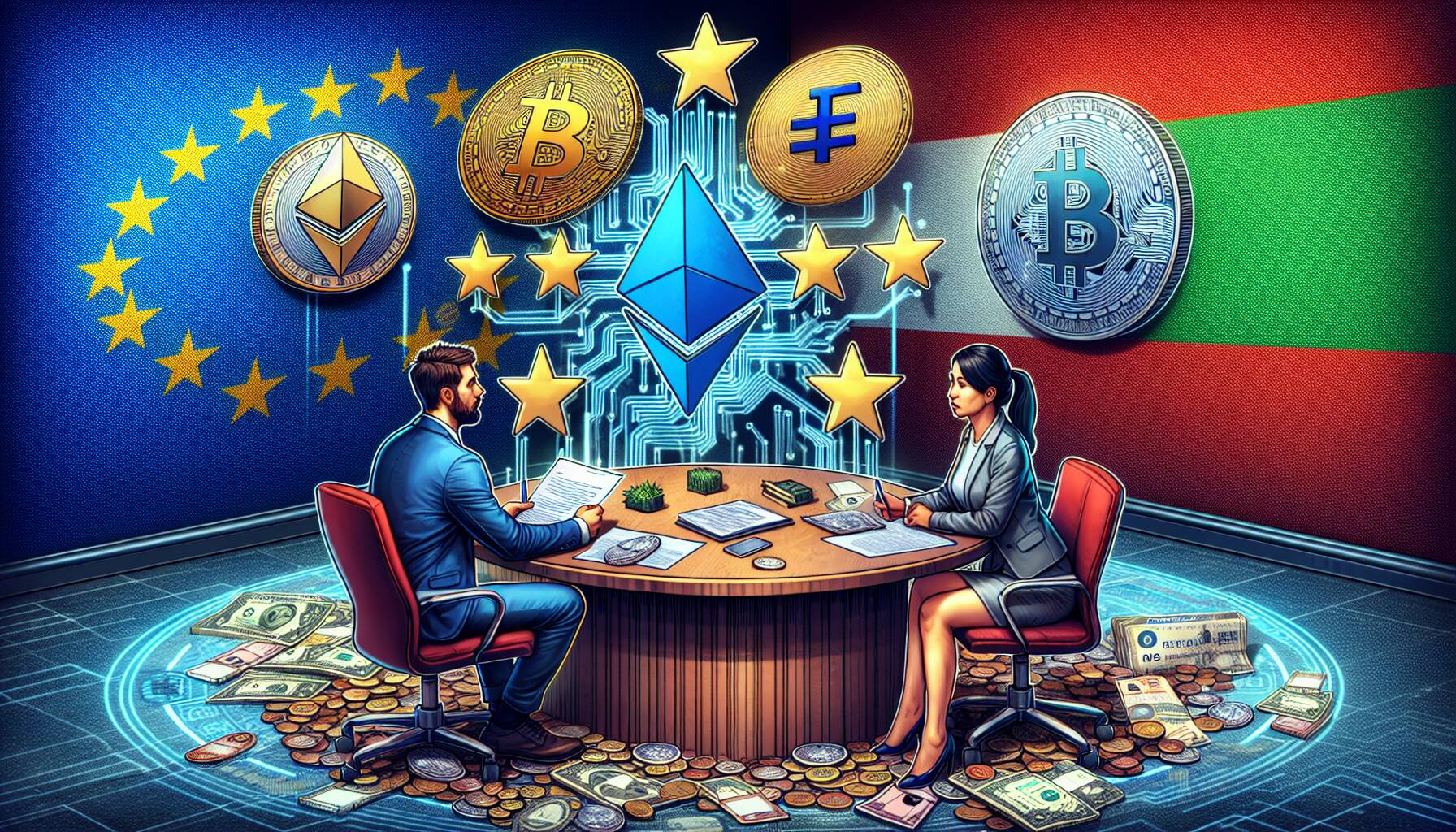As the digital currency landscape evolves at an unprecedented pace, EU policymakers are stepping up discussions about the potential introduction of a digital euro. This follows the recent approval of the GENIUS Act by the U.S. Congress, which establishes a framework for the booming $288 billion stablecoin sector. Dollar-pegged tokens like Tether’s USDT and Circle Internet’s USDC are dominating this space, raising concerns in Europe about maintaining competitiveness in cross-border payments.
Reports indicate that the U.S. legislation has caught many in Europe off guard, igniting fears that if the EU does not accelerate its plans for a digital euro, it could lose ground. There is a noticeable shift in strategy, as officials are now contemplating the possibility of launching a central bank digital currency (CBDC) on public blockchains such as Ethereum or Solana, rather than sticking to the previously envisioned private infrastructure, which was favored by the European Central Bank (ECB) due to privacy and security concerns.
The ECB has been exploring the idea of a digital euro for several years, proposing it as a viable public alternative to private payment systems in response to the declining use of cash. However, with rising momentum in the U.S. and other countries, including China’s pilot of the digital yuan and the U.K.’s consideration of a digital pound, European officials are coming under increased pressure to act.
“The ECB is still evaluating both centralized and decentralized technologies,” the Financial Times reported, highlighting the possibility of a blockchain-powered euro. This reflects the urgency for the EU to safeguard the relevance of its single currency in an ever-digitalizing financial landscape.
While euro-backed stablecoins, such as Circle’s EURC, already exist, a central bank-issued digital euro would signify a far more substantial commitment to the future of money. As Europe navigates these challenging waters, the decisions made by its policymakers will play a crucial role in shaping the continent’s financial future.

Digital Euro: A Response to U.S. Stablecoin Legislation
Key points regarding the potential impact of a digital euro in the financial landscape:
- Introduction of Digital Euro: Policymakers in the EU are accelerating efforts to establish a digital euro to remain competitive.
- U.S. Legislation Impact: The GENIUS Act introduces a framework for stablecoins, raising concerns in Europe regarding cross-border payment control.
- Potential Shift to Public Blockchains: Discussions now include launching the digital euro on decentralized networks like Ethereum or Solana.
- ECB’s Evolving Perspective: The European Central Bank is reconsidering its previous stance on a centralized system in light of U.S. developments.
- Concerns about Dollar Dependency: There are fears that without a digital euro, euro deposits may increasingly move into dollar-denominated assets.
- International Competition: With China and the UK also exploring their own digital currencies, Europe faces mounting pressure to act quickly.
“The ECB confirmed it is evaluating both centralized and decentralized technologies, indicating a potential shift towards a blockchain-powered euro.”
European Union’s Digital Euro Initiative: Navigating Competitive Landscapes
The ongoing discussions among European Union policymakers regarding the introduction of a digital euro come in response to the recent U.S. legislative developments surrounding stablecoins. The passage of the GENIUS Act has added urgency to the EU’s efforts to establish its own digital currency, highlighting a critical competitive disadvantage. The EU must not only contend with the rapid advancements in the U.S. but also with China’s digital yuan and the U.K.’s explorations into a digital pound.
One of the significant advantages of the proposed digital euro is its potential to enhance cross-border payment solutions, ensuring that Europe maintains its monetary autonomy against dollar-pegged assets that could dominate the market. The move toward potentially utilizing public blockchains like Ethereum or Solana represents a strategic shift that could increase the digital euro’s versatility and appeal. This could benefit consumers and businesses within the EU by providing improved transaction speeds and lower costs.
However, this pivot from a centralized to a decentralized infrastructure poses its own set of challenges. The historical preference for privacy and control may complicate EU policymakers’ shift in strategy and fuel concerns over regulatory compliance and security issues. By exploring decentralized options, the ECB risks alienating stakeholders who favor the predictability and security associated with centralized systems, thereby creating internal friction.
Moreover, while the introduction of a central bank digital currency (CBDC) could bolster the euro’s significance in the global market, it may inadvertently create problems for already established euro-backed stablecoins like Circle’s EURC. If a digital euro emerges, it could overshadow these private entities, possibly leading to market instability in the short term.
In essence, the digital euro is poised to benefit various sectors, particularly those engaged in international trade and finance, by enhancing payment efficiency. Yet, the drastic shift in policy may also exacerbate existing tensions within Europe’s financial ecosystem, especially among private stablecoin issuers and traditional banking institutions. As the ECB weighs its options, the stakes are high, and the decisions made will resonate across financial markets and institutions.

















